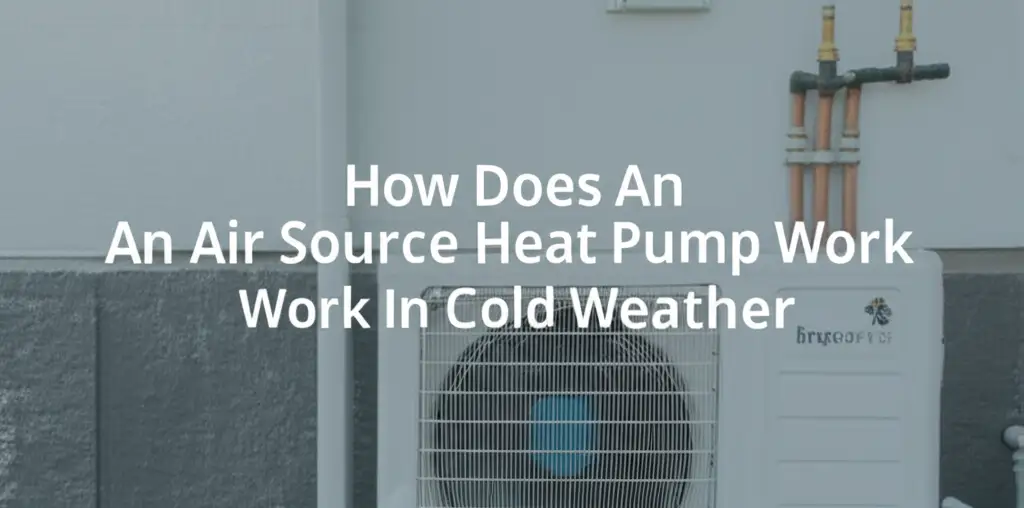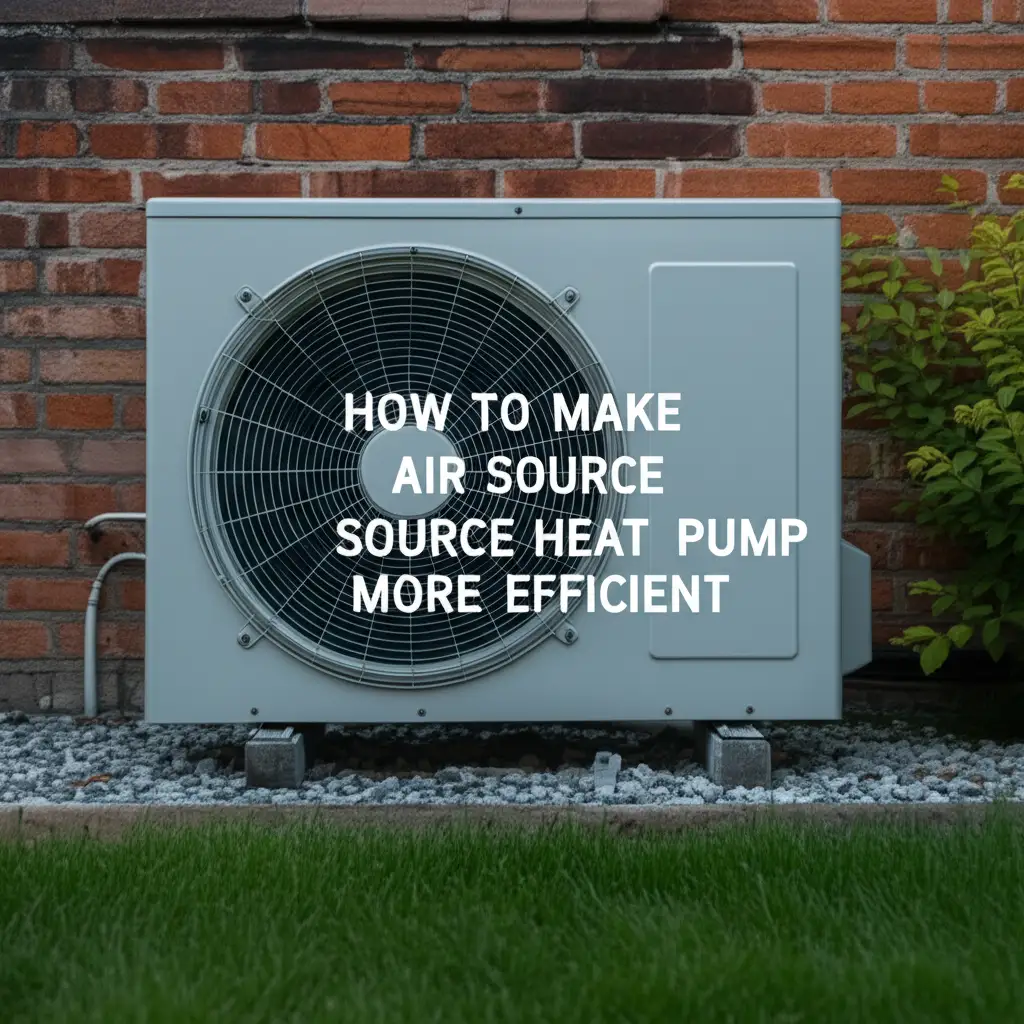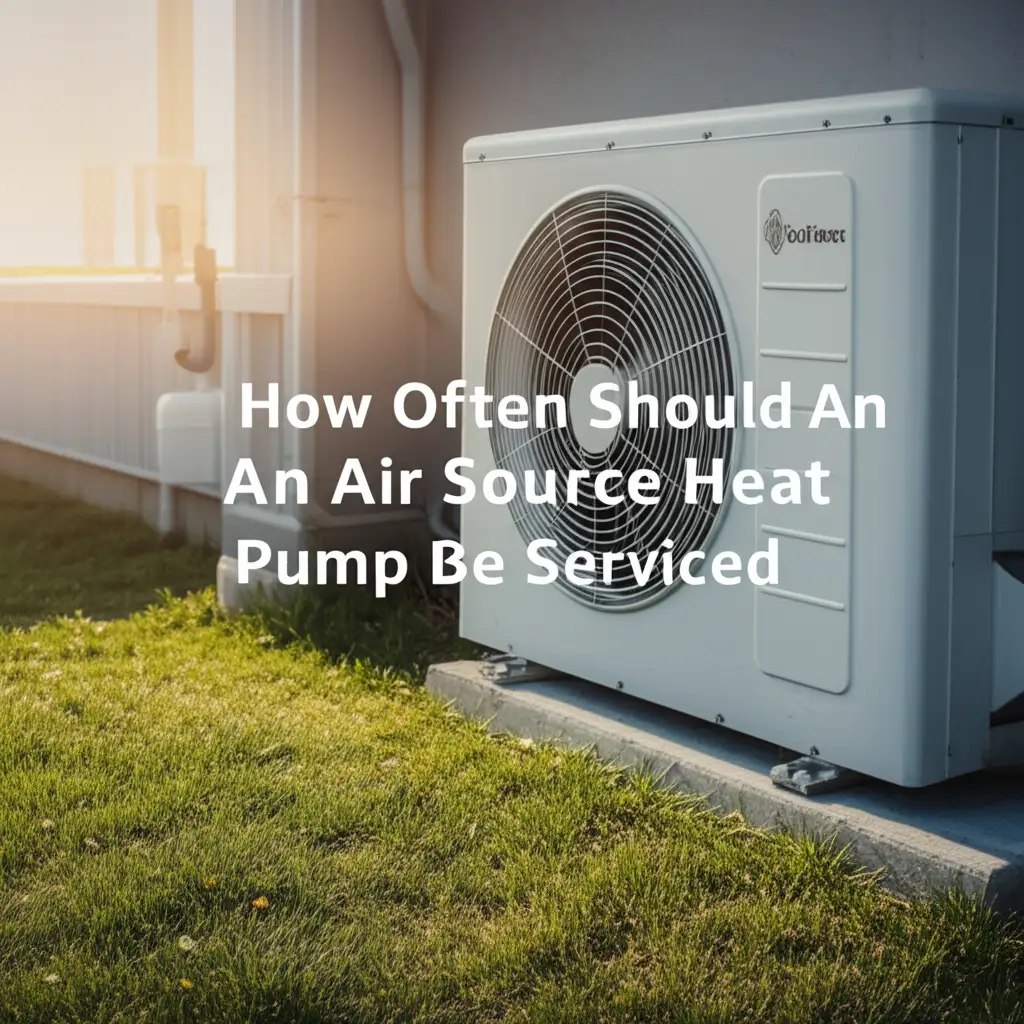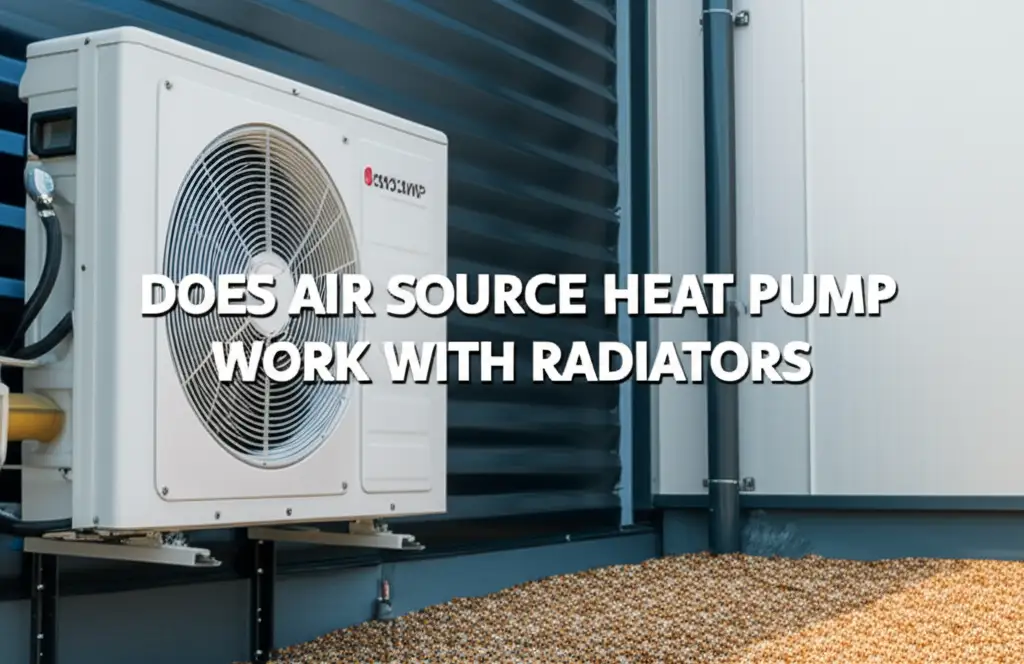· Katria Melrose · Heat Pumps · 18 min read
Why Is My Air Source Heat Pump Costing So Much
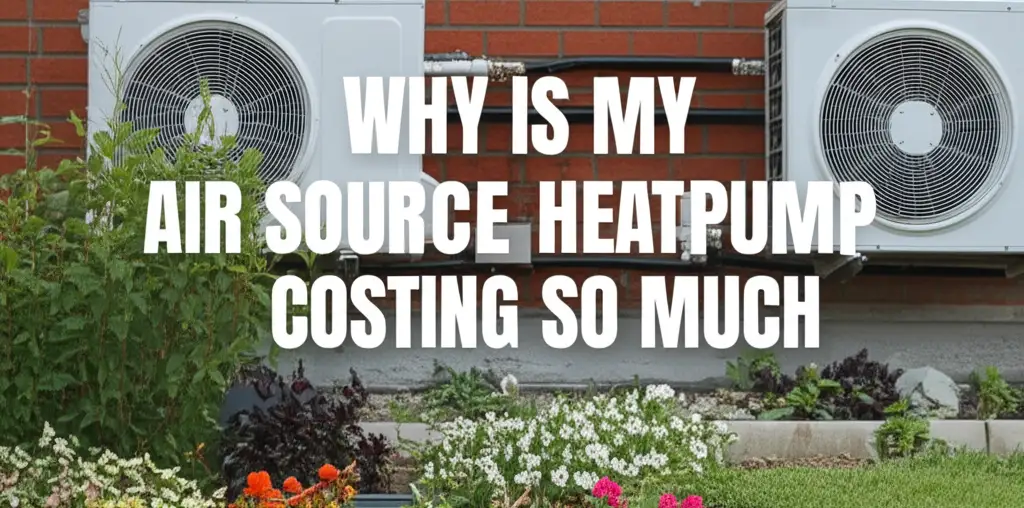
Understanding High Air Source Heat Pump Costs
Many homeowners choose air source heat pumps for their energy efficiency. They offer a green way to heat and cool homes. However, you might find your air source heat pump costing so much, leading to unexpectedly high energy bills. This situation can be frustrating when you expect savings. Understanding the specific reasons helps you address the problem.
This guide explores common factors that make air source heat pumps expensive to run. We will discuss everything from installation mistakes to maintenance needs and how external conditions play a part. You will find practical steps to reduce your energy use and optimize your system. By the end, you will know how to make your heat pump work efficiently and affordably.
Takeaway
To reduce high air source heat pump costs, focus on these key actions:
- Improve Home Insulation: Seal air leaks and add insulation to reduce heat loss.
- Regular Maintenance: Clean filters, coils, and ensure professional servicing.
- Optimize Settings: Use smart thermostats and avoid drastic temperature changes.
- Check System Sizing: Ensure your heat pump matches your home’s needs.
- Address Installation Issues: Correct any initial setup problems.
Your air source heat pump might be costing so much due to a mix of factors. These often include poor home insulation, incorrect system sizing, neglected maintenance, or suboptimal thermostat settings. High electricity prices and extreme weather conditions also increase operational expenses. Addressing these specific issues helps lower your energy bills.
How Your Air Source Heat Pump Works and Its Efficiency
An air source heat pump moves heat from one place to another. In winter, it pulls heat from outside air into your home. In summer, it moves heat from inside your home to the outside. This process uses electricity to run components like compressors and fans. It does not generate heat, but rather moves existing heat.
The efficiency of a heat pump is measured by its Coefficient of Performance (CoP). A CoP of 3.0 means it produces 3 units of heat energy for every 1 unit of electrical energy consumed. This makes them very efficient compared to systems that create heat. However, many factors can reduce this efficiency, leading to higher running costs. Understanding the basic operation helps diagnose cost issues.
The Basics of Heat Transfer
Heat pumps use a refrigerant cycle. This cycle absorbs heat from the air, compresses it to raise its temperature, and then releases it inside. During cooling, the process reverses. The outdoor unit takes heat from the air. The indoor unit then releases it into your home.
This system relies on temperature differences. Even on a cold day, there is heat energy in the outdoor air. The heat pump extracts this low-grade heat. It then concentrates it and delivers it indoors. This method is much more efficient than converting electricity directly into heat.
Seasonal Performance Factor (SPF)
The Seasonal Performance Factor (SPF) gives a better picture of a heat pump’s real-world efficiency. CoP is a laboratory test under specific conditions. SPF accounts for varying outdoor temperatures and standby modes throughout a heating season. A higher SPF means better year-round efficiency.
Factors like defrost cycles and auxiliary heating reduce the SPF. For example, in very cold weather, the heat pump may need to defrost its outdoor coil. It might also use electric resistance heating for a boost. These actions consume more power. This can make your air source heat pump cost more to run in winter.
Common Reasons for High Air Source Heat Pump Energy Bills
It can be surprising when your energy bills climb despite having an efficient air source heat pump. Many factors contribute to high running costs. These often relate to your home’s structure and how you use the system. Identifying these common issues is the first step toward saving money.
I have found that many people overlook simple things that drastically affect heat pump performance. Addressing these points can lead to noticeable savings. Do not assume the heat pump itself is faulty right away. Often, the problem lies elsewhere.
Poor Insulation and Air Leaks
Your home’s ability to retain heat directly impacts your heat pump’s workload. If your house has poor insulation, heat escapes easily in winter. In summer, heat gets in. This forces your heat pump to work harder and longer to maintain comfort. Older homes often have insulation problems.
Air leaks through windows, doors, and walls are also significant energy culprits. These small gaps allow conditioned air to escape. They let unconditioned air enter. This creates drafts and temperature imbalances. Sealing these leaks is a cost-effective way to improve efficiency. It directly lowers your air source heat pump costs.
Incorrect System Sizing
An air source heat pump must be the right size for your home. If it is too small, it struggles to heat or cool properly. It runs almost constantly, increasing energy use. If it is too large, it cycles on and off too frequently. This “short cycling” wastes energy and causes wear.
An oversized unit also struggles with humidity removal in cooling mode. It reaches the set temperature quickly and shuts off. This does not allow enough time to dehumidify the air. Proper sizing considers factors like square footage, climate, and insulation levels. A professional should perform a load calculation.
Suboptimal Thermostat Settings
How you set your thermostat greatly impacts your energy bills. Constantly changing the temperature or setting it too high in winter increases energy use. Every degree you raise the temperature significantly increases the energy needed. Heat pumps work best when maintaining a steady temperature.
Avoid setting the thermostat very high to heat your home quickly. The heat pump works hard to reach this high setting. It will then use more energy. Instead, set a comfortable temperature and stick to it. Smart thermostats help automate this process for better efficiency. If you find your heat pump constantly running or not reaching the set temperature, it could indicate an issue. Sometimes, your heat pump may not turn off when it reaches temperature, which can also lead to higher energy use.
Maintenance Lapses and Their Impact on Running Costs
Regular maintenance is crucial for any heating and cooling system. For air source heat pumps, neglecting maintenance can quickly lead to higher energy bills. A well-maintained heat pump operates at peak efficiency. A neglected one struggles to perform its job. This forces it to use more electricity.
I have seen many cases where simple, overlooked maintenance tasks caused significant cost increases. These are often easy to fix. Professional servicing combined with homeowner checks keeps your system running smoothly. It extends the life of your unit too.
Clogged Filters and Coils
Air filters catch dust and debris from the air. Over time, these filters become clogged. A clogged filter restricts airflow through the heat pump. This makes the fan work harder to pull air through, using more electricity. It also reduces the system’s ability to transfer heat efficiently.
Similarly, the outdoor coil can accumulate dirt and debris. This build-up acts as an insulator. It prevents the coil from absorbing or releasing heat effectively. Both the indoor evaporator coil and the outdoor condenser coil need to be clean. Dirty coils reduce the heat pump’s efficiency significantly. You can learn how to clean heat pump coils yourself or hire a professional.
Low Refrigerant Levels
The refrigerant is the fluid that carries heat within your heat pump system. If the refrigerant level is low, it means there is a leak somewhere. Low refrigerant reduces the system’s ability to transfer heat. This forces the compressor to work harder to try and achieve the desired temperature.
A heat pump with low refrigerant will run longer cycles. It will use more energy without providing adequate heating or cooling. A qualified technician must fix any leaks and recharge the refrigerant. This is not a DIY task due to environmental regulations and safety concerns. It also helps explain why your air source heat pump is costing so much.
Fan and Motor Issues
The fans in both your indoor and outdoor units move air over the coils. If these fans are dirty, unbalanced, or have motor issues, they will not move air efficiently. A struggling fan motor draws more electricity. It also reduces the overall airflow, impacting heat transfer.
Squealing or grinding noises from your heat pump often point to fan or motor problems. These issues lead to reduced system performance and increased energy use. Regular inspections during professional servicing can catch these problems early. This prevents bigger, more expensive repairs later. Remember, you need to service an air source heat pump regularly to keep it efficient.
External Factors Influencing Your Heat Pump’s Expense
While your heat pump’s performance and maintenance are vital, external factors also play a large role in your running costs. You cannot control these factors directly. However, understanding them helps manage your expectations and plan for potential cost fluctuations. Knowing these external influences provides a complete picture.
I have learned that even the most efficient heat pump will see higher costs under certain conditions. These conditions are outside your immediate control but affect your budget. Being aware of them helps you budget and make informed choices.
Local Electricity Prices
Air source heat pumps run on electricity. Therefore, the cost of electricity in your area directly affects your bills. Electricity prices can vary significantly by region and even by time of day. Areas with higher electricity rates will naturally experience higher heat pump running costs.
Utility companies sometimes offer variable pricing plans. These plans charge more during peak demand hours. If your heat pump runs heavily during these expensive times, your bills will increase. Check your local electricity rates and consider if a different rate plan could save you money. This is a major reason why your air source heat pump is costing so much.
Extremely Cold Weather
Air source heat pumps work best in moderate climates. As outdoor temperatures drop, the heat pump has to work harder to extract heat from the air. Its efficiency decreases in very cold conditions. Most units have a ‘balance point,’ a temperature below which they become less efficient or rely on auxiliary heating.
When temperatures fall below freezing, the heat pump may activate its auxiliary electric resistance heating. This backup heating is far less efficient than the heat pump itself. It consumes a lot of electricity. Periods of prolonged extreme cold will undoubtedly increase your energy bills.
Household Hot Water Demand
Many air source heat pumps can also heat your domestic hot water. While this is an efficient way to get hot water, it adds to the heat pump’s workload. If your household uses a lot of hot water, your heat pump will run more often to meet this demand. This translates to higher electricity consumption.
Consider your hot water habits. Taking long showers or running multiple hot water appliances simultaneously increases demand. Insulating your hot water tank and pipes can also help reduce heat loss. Understanding how long an air source heat pump takes to heat water helps manage expectations and usage.
Installation Errors and System Compatibility Problems
The installation of your air source heat pump is as important as the unit itself. Even the best heat pump will underperform if installed incorrectly. Errors during setup can lead to years of high energy bills and reduced comfort. Ensuring a proper installation from the start saves money in the long run.
I have seen countless examples where initial installation mistakes caused ongoing problems. It is worth investing in a qualified installer. Do not cut corners here, as the consequences can be expensive. A proper setup prevents your air source heat pump from costing so much.
Improper Sizing and Placement
As discussed, incorrect sizing leads to inefficiency. An installer must perform a detailed load calculation. This calculation considers your home’s square footage, insulation, windows, and climate zone. Without it, the unit may be too small or too large.
Placement of the outdoor unit also matters. It needs adequate airflow and clearance. Blocking the unit or placing it in an enclosed space can restrict airflow. This reduces efficiency. It forces the unit to work harder. Proper siting also involves considering noise levels and aesthetics. For instance, questions like can you put an air source heat pump on the front of a house or can you install an air source heat pump on your roof relate directly to optimal placement.
Ductwork Issues
If your air source heat pump uses existing ductwork, its condition is critical. Leaky, poorly insulated, or undersized ducts waste a lot of energy. Conditioned air escapes before reaching your living spaces. This means your heat pump works harder to deliver the set temperature.
Damaged or improperly sealed ducts can reduce system efficiency by 20-30% or more. This is a huge energy loss. Checking your ductwork for leaks and proper insulation is vital. It ensures that the heat produced by your heat pump reaches its intended destination.
Incompatibility with Existing Systems
Sometimes, an air source heat pump is installed as an add-on to an existing heating system. If the two systems are not compatible or integrated correctly, inefficiencies can arise. For example, if the backup heating system kicks in too often, it can significantly increase costs.
The controls and thermostats must be set up to manage both systems effectively. Improper wiring or sensor placement can lead to conflicts. This results in one system working against the other. A professional HVAC technician ensures proper integration. This prevents unnecessary energy consumption.
Optimizing Your Air Source Heat Pump for Lower Costs
Once you understand why your air source heat pump might be costing so much, you can take action. Many strategies help reduce energy consumption. These range from simple habit changes to system upgrades. Optimizing your heat pump’s operation can lead to significant savings.
I have found that a multi-pronged approach works best. No single solution will solve all problems. Combining several of these tips will give you the best results. It puts you back in control of your energy bills.
Home Energy Audits
A professional home energy audit identifies specific areas of energy waste. An auditor uses specialized equipment to find air leaks and insulation deficiencies. They also assess your heating and cooling system’s performance. The audit provides a detailed report with recommendations.
This report helps prioritize improvements that offer the best return on investment. It can pinpoint exactly where your home is losing heat. This makes your heat pump work harder. Addressing these issues directly reduces your heat pump’s workload and your bills.
Smart Thermostat Usage
Smart thermostats offer advanced control over your heating and cooling. They learn your habits and adjust temperatures automatically. Many allow remote control via smartphone apps. You can set schedules or use geofencing to save energy when you are away.
These thermostats optimize heat pump operation. They prevent unnecessary heating or cooling. Some models even integrate with local weather forecasts to pre-heat or pre-cool your home. This ensures comfort with less energy use. This small upgrade helps manage your air source heat pump costs.
Regular Professional Servicing
Scheduled maintenance by a qualified technician keeps your heat pump running at peak efficiency. They clean coils, check refrigerant levels, inspect electrical components, and lubricate moving parts. This prevents small issues from becoming major, costly problems.
Regular servicing also extends your heat pump’s lifespan. It ensures that your warranty remains valid. Most manufacturers require annual maintenance for warranty coverage. Think of it as a tune-up for your car. It helps your heat pump perform its best. Remember how often to service an air source heat pump to maintain its efficiency.
Improving Home Envelope
Beyond basic insulation and air sealing, consider enhancing your entire home “envelope.” This includes upgrading windows and doors to more energy-efficient models. High-performance windows reduce heat transfer. They block drafts. They also improve comfort near window areas.
Adding attic or wall insulation further minimizes heat loss. This keeps heat inside during winter and outside during summer. A well-sealed and insulated home requires less energy from your heat pump. This makes it a smart investment for long-term energy savings. For instance, addressing issues like why your air source heat pump uses so much electricity often starts with improving the home envelope.
Complementary Technologies
Consider integrating your air source heat pump with other energy-saving technologies. Solar panels can generate electricity to power your heat pump. This significantly reduces your reliance on grid electricity. It lowers your running costs, especially during peak solar production hours.
This combination makes your home more self-sufficient. It also reduces your carbon footprint. Look into running an air source heat pump with solar panels to maximize your energy independence and savings. Other options include smart vents or zoned heating systems for even more precise control.
Comparing ASHP Costs with Other Heating Systems
Understanding why your air source heat pump costs what it does also involves comparing it to alternatives. Heat pumps typically offer lower running costs than traditional fossil fuel systems. However, this depends on various factors. Making a direct comparison helps clarify the value of your heat pump.
I often explain to people that initial cost is only one part of the equation. Lifetime running costs are far more important. Seeing how your heat pump stacks up against other options helps you appreciate its overall efficiency. It also highlights where you can find improvements.
Fuel vs. Electricity Costs
Traditional furnaces burn natural gas, oil, or propane. Their running costs depend on the price of these fuels. These prices can be volatile. Air source heat pumps run on electricity. Electricity prices also fluctuate, but heat pumps use electricity very efficiently.
A heat pump’s efficiency means it often provides heating at a lower cost per unit of heat delivered than fossil fuel systems. Even with relatively high electricity prices, the heat pump’s high CoP can make it cheaper to run. This is a key advantage of heat pump technology.
Initial Investment vs. Running Costs
Air source heat pumps often have a higher upfront installation cost than conventional furnaces. This initial investment can deter some homeowners. However, you must consider the long-term running costs. Over its lifespan, a heat pump typically saves more money in energy bills.
The initial cost is a one-time expense. Running costs are ongoing. Government incentives and rebates can also offset the upfront cost. When evaluating an air source heat pump, always consider the total cost of ownership. This includes both the purchase price and the projected energy savings over its lifetime.
FAQ Section
Q1: Can cold weather make my air source heat pump cost more?
Yes, cold weather significantly increases air source heat pump running costs. As outdoor temperatures drop, the heat pump works harder to extract heat. Its efficiency decreases. Below a certain temperature, it may use auxiliary electric resistance heating. This backup heating is less efficient and consumes more electricity, driving up your bills.
Q2: How often should I service my air source heat pump to reduce costs?
You should service your air source heat pump annually. Regular professional maintenance helps keep the system running at peak efficiency. It prevents minor issues from becoming major, costly problems. This includes cleaning coils, checking refrigerant, and inspecting electrical components. Homeowners should clean or replace filters monthly.
Q3: Does insulation affect how much my heat pump costs?
Absolutely. Poor home insulation and air leaks force your heat pump to work much harder. Heat escapes easily in winter and enters in summer. This continuous struggle to maintain desired temperatures consumes more electricity. Improving your home’s insulation and sealing air leaks significantly reduces your air source heat pump’s energy use.
Q4: Why might my new air source heat pump be costing so much?
Even a new air source heat pump can cost a lot due to several reasons. These include incorrect system sizing for your home, improper installation, or unaddressed ductwork issues. Your home’s existing insulation levels or high local electricity prices also play a role. A professional assessment can pinpoint specific problems.
Q5: Can I reduce costs by adjusting my thermostat settings?
Yes, smart thermostat use and consistent settings help reduce costs. Avoid drastic temperature changes. Set a comfortable temperature and maintain it. Constantly raising or lowering the thermostat forces the heat pump to work harder. Smart thermostats learn your preferences and optimize schedules for better energy efficiency.
Q6: What role do dirty coils play in high heat pump costs?
Dirty indoor evaporator and outdoor condenser coils severely reduce your heat pump’s efficiency. Dirt acts as an insulator, hindering heat transfer. This forces the system to consume more electricity to achieve the same heating or cooling. Regular cleaning of coils and air filters is crucial for efficient operation and lower costs.
Conclusion
Finding your air source heat pump costing so much can be disheartening, especially when you expected energy savings. We have explored the many reasons behind high heat pump running costs. These range from environmental factors and electricity prices to system specific issues like maintenance and installation quality. It is clear that a combination of factors usually causes increased expenses.
By understanding these common culprits, you gain the power to take action. Improving your home’s insulation, ensuring regular professional maintenance, and optimizing your thermostat settings are critical steps. Addressing potential installation errors and considering complementary technologies like solar panels can further reduce your energy footprint. Take control of your home’s energy use today. Start by checking your filters, sealing air leaks, or scheduling a professional inspection. You can significantly lower your air source heat pump costs and enjoy the comfortable, efficient home you deserve.
- air source heat pump costs
- heat pump efficiency
- high energy bills
- home heating savings
- energy saving tips
- heat pump troubleshooting


